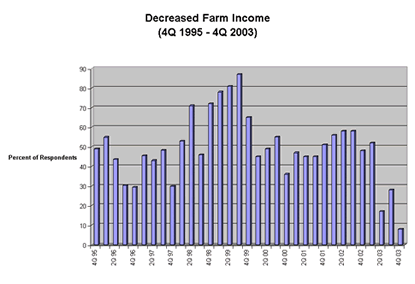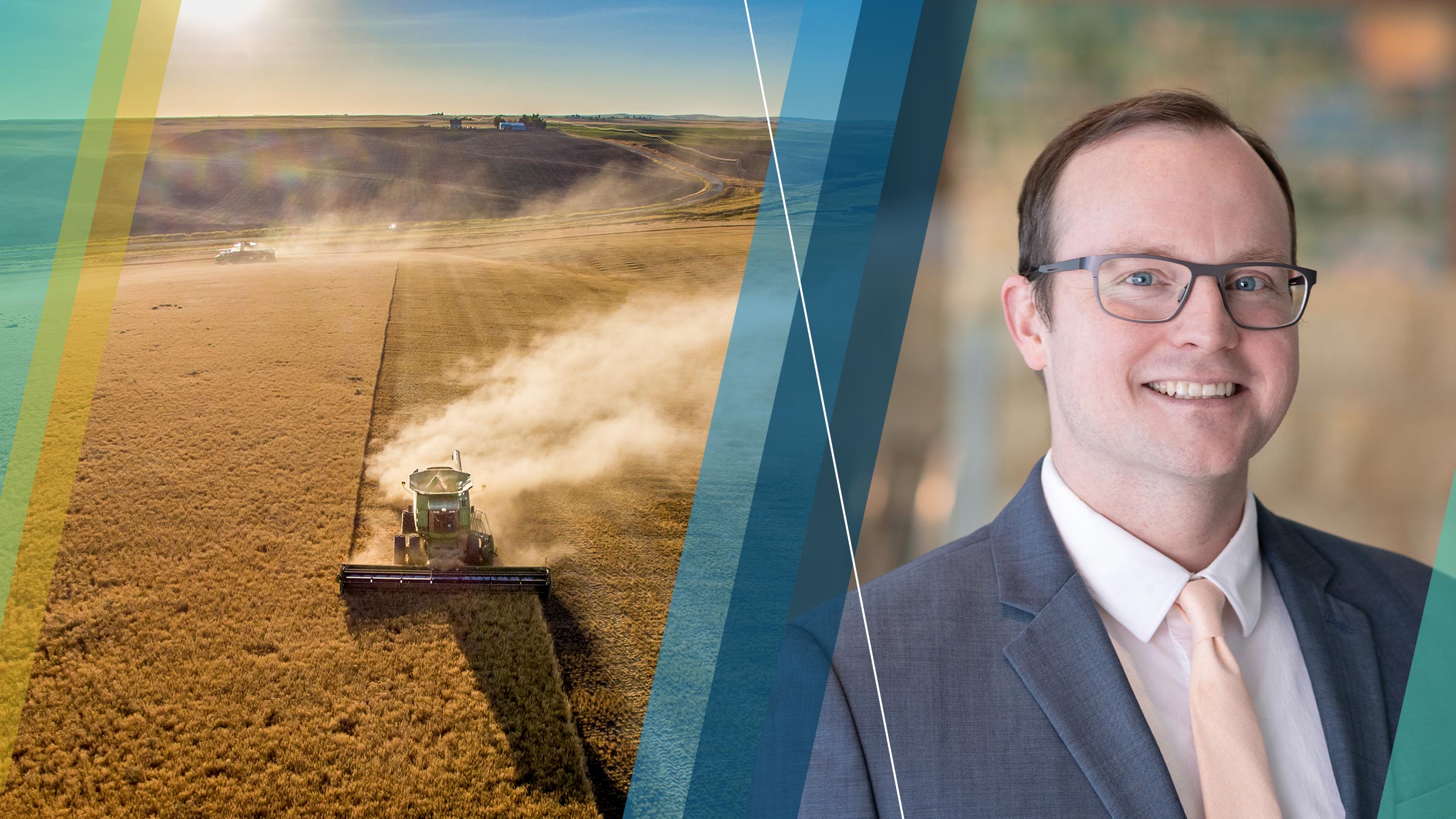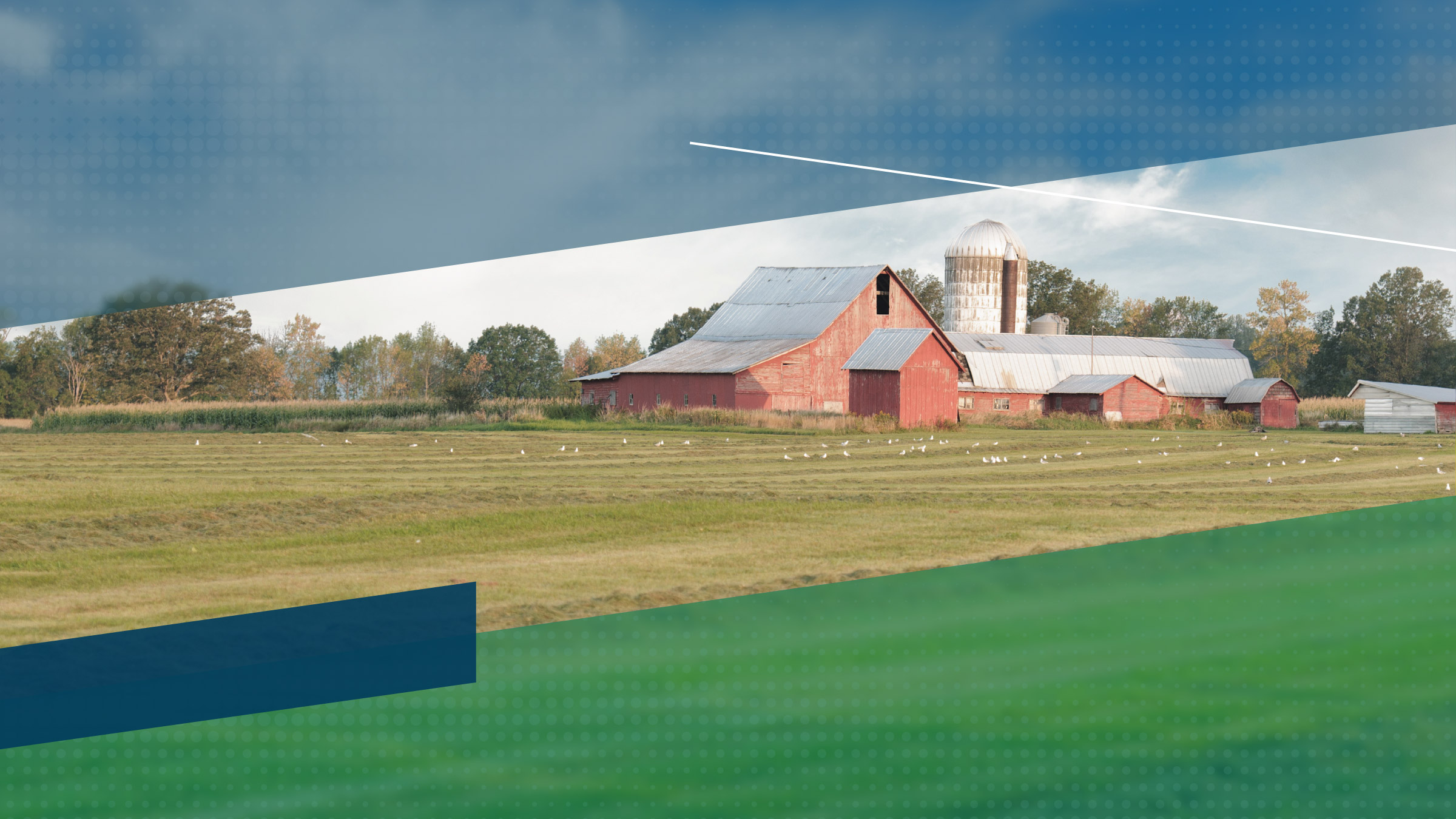Agricultural financial conditions were strong during the fourth quarter throughout the district, according to the Minneapolis Fed’s fourth quarter agricultural credit conditions survey. Loan repayment and farm income have increased. Corn yields were robust, while soybean yields have suffered due to drought. Farmers have begun to rebound from previous declines in dairy prices. The outlook for 2004 is promising, as lenders expect an increase in farm income and loan demand. Cattle prices through 2003 led to higher incomes, but the effects of mad cow disease are expected to play out in 2004. As one South Dakota lender commented, “… concern has recently surfaced on the focus of BSE and loss of our livestock export markets.” Overall, the outlook across the district is positive.
Farm income, farm household spending and capital investment
An increase in farm income during the fourth quarter was reported by 59 percent of lenders, while a third noted no change. Only 8 percent reported below-normal levels of income, the lowest figure in recent survey history (see chart). “Recent trends in both meat and grains pushed up expected income and loan repayments,” commented one Minnesota lender. Several lenders throughout the district shared these sentiments, although many expressed concerns about the effects of mad cow disease on livestock prices. Lenders in Wisconsin and Montana reported greater decreases in farm incomes, 20 percent and 18 percent, respectively, than their neighbors.

Source: Federal Reserve Bank of Minneapolis
Household spending in the district was strong: One-third of the surveyed lenders reported an increase and 61 percent noted no change in the fourth quarter. These feelings were echoed in their outlook for the upcoming quarter, as 94 percent of lenders felt that household spending will remain constant or increase.
Capital spending also stayed fairly stable with only 16 percent of lenders reporting a decrease. One lender in Montana wrote, “Capital spending was up due to changes in tax laws that allow more depreciation. Capital spending was also influenced by [an] increase in income as producers had put off making some purchases over the last few years of lower income.” The outlook for capital spending is generally positive, although 33 percent of Wisconsin lenders and 23 percent of South Dakota lenders expect a decrease in the upcoming quarter.
Loan repayment, renewals and limits
Loan repayments across the district were stable or increased during the fourth quarter. Only 9 percent of lenders districtwide reported a decrease in loan repayments. The demand for renewals or extensions remained constant, according to 74 percent of the surveyed lenders, while 12 percent reported an increase. One lender from South Dakota wrote, “… 2004 should be one of the best renewal seasons in years.” Most of their current customers will qualify for new operating credit this spring as only 5 percent of 2003 customers will not qualify for operating loans.
There is a limit to the amount that agricultural customers can borrow. District respondents reported that 23 percent of their farm and ranch customers were at their loan limit—from a high of 33 percent in Montana down to 18 percent in South Dakota.
Demand for loans, required collateral and interest rates
Loan demand through the fourth quarter remained steady, as 62 percent of lenders reported no change and 20 percent noted an increase. Collateral requirements were also steady; only 8 percent of lenders reported an increase and none, a decrease.
“Lower interest rates have been the salvation for this region,” wrote a lender from South Dakota. Fourth quarter average interest rates for fixed and variable loans fell slightly from the third quarter of 2003, resulting in some of the lowest rates last year. Most lenders reported sufficient availability of funds, but 10 percent of respondents from Wisconsin noted a decrease in their fund availability.
Land values
Land values continued to increase. “Nonfarmer, nonresident land purchaser[s] have put upward pressure on our land values,” wrote one lender from North Dakota. The rise in land values does not bode well for some farmers: “Land rental rates appear to be following this trend as well. This will make it increasingly difficult for existing or beginning farmers to be able to afford expansion or startup,” observed a lender from South Dakota. District ranchland and farmland prices rose an average of 25 percent and 16 percent, respectively, from fourth quarter 2002.
Outlook
Lenders feel optimistic about first quarter 2004, as most expect farm income, household and capital spending, and loan repayment and demand to either increase or remain level with the fourth quarter in 2003. However, some lenders expressed reservations regarding the effects of mad cow disease on cattle prices and thus overall income and financial conditions, especially in areas where the cattle industry constitutes the majority of lenders’ portfolios.





